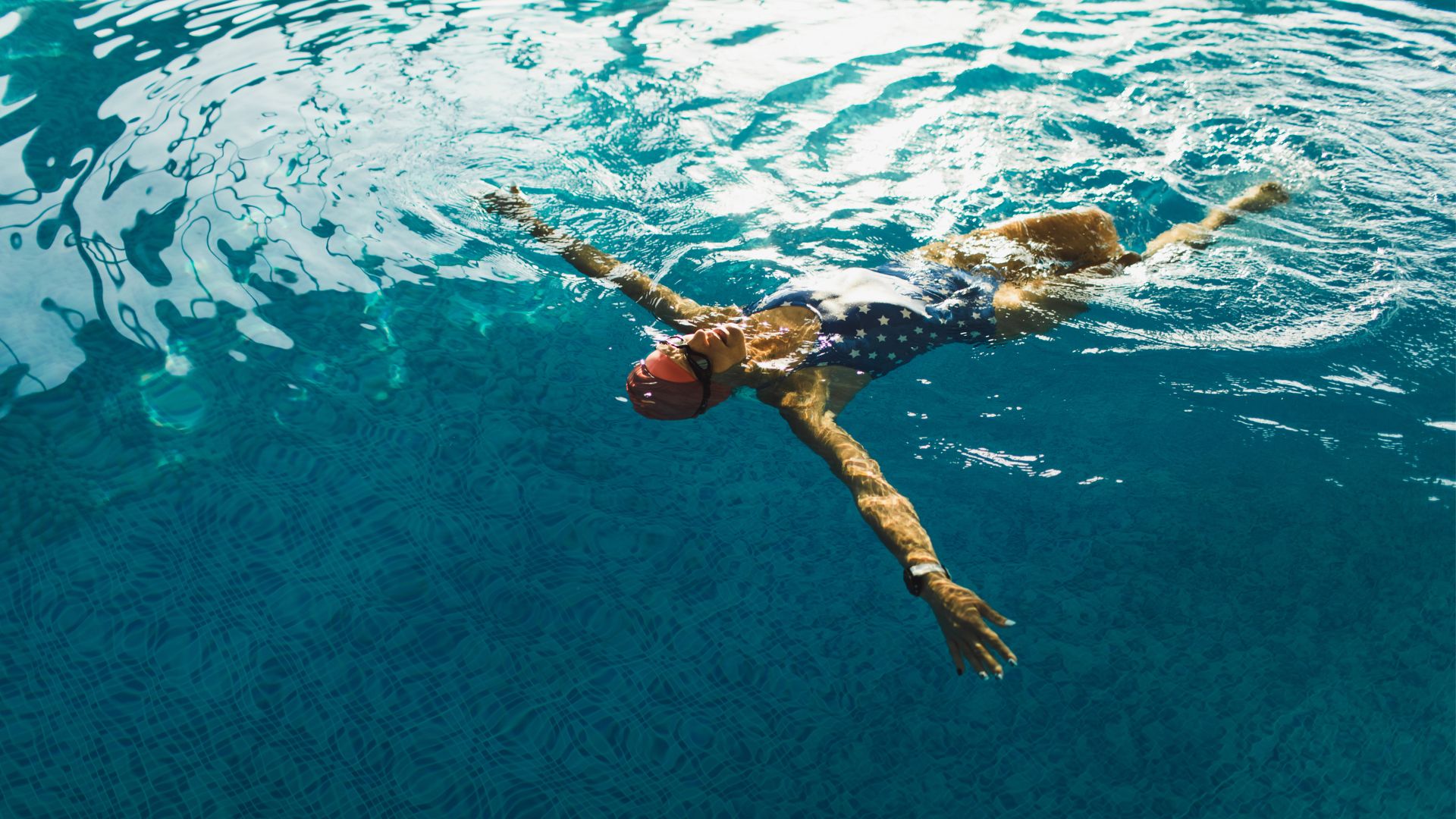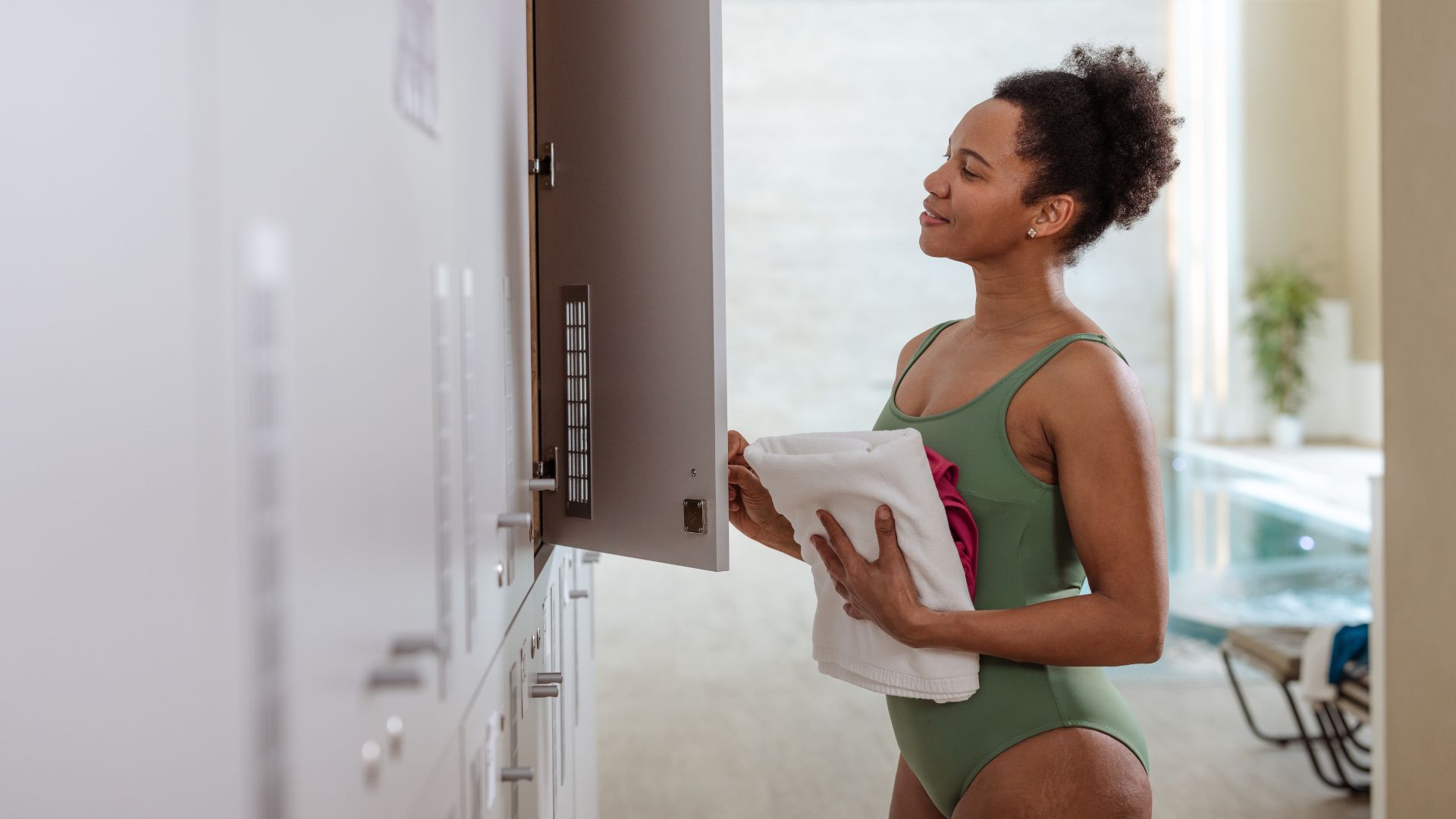Swimming workouts can help beginners boost cardio fitness and get stronger - 3 to try in the pool
Swimming workouts are beginner-friendly and low-impact exercises, ideal for those looking to get fitter and stronger without pressure on the bones and joints


In a swimming workout, water provides natural resistance against the body and support from all sides, helping to strengthen the muscles, challenge the heart to improve cardiovascular fitness, and burn calories.
Whether you go swimming every day or a couple of times a month, any amount of time in the pool is good, but having a dedicated workout can help you see progress. It can give your training some direction, so you know what you're doing when you get in the water, and it can help increase your motivation.
Swimming workouts don't have to be very long to reap the benefits, either, says Brad Whinstone, Total Fitness' swim development lead. "Even 20 to 30 minutes of consistent swimming two to three times a week can significantly improve fitness and reduce stress."
Is swimming good for fitness?
Absolutely - swimming can help boost your cardiovascular fitness, muscle strength, and mobility. In postmenopausal women, swimming was found to improve cardiorespiratory fitness and arterial stiffness (which increases the risk of high blood pressure, stroke, and other diseases), making it an excellent choice.
As swimming is also a low-impact workout, it's easier on the bones and joints than other exercises like running. This makes it suitable for all fitness levels and those returning to exercise after a break.
We've spoken to expert swim coach Nuala Muir-Cochrane, also the swimming product development manager at David Lloyd, to offer three workouts you can do in the pool this week.
Here, she reveals the structure to follow and the best one for your goal:
Sign up to our free daily email for the latest royal and entertainment news, interesting opinion, expert advice on styling and beauty trends, and no-nonsense guides to the health and wellness questions you want answered.
Swimming workouts for beginners
1. For increasing your stamina
Distance: 850m/approx. 34 lengths in a 25m pool.
Time: 30-minutes (with breaks between sets)
- Warm-up: 200m
1 x 100m Front crawl
2 x 50m Backstroke - Main set: 450m
1 x 50m Front crawl
2 x 50m Breaststroke
1 x 50m Front crawl
2 x 50m Breaststroke
3 x 50m Front crawl - Cool down: 200m
1 x 100m Backstroke
1 x 100m Front crawl
2. For building up your core and strength
Distance: 900m/approx. 36 lengths in a 25m pool
Time: 30-minutes (with breaks between sets)
- Warm up: 200m
1 x 100m Front crawl
2 x 50m Breaststroke - Main set: 500m
4 x 50m Front crawl
2 x 50m Front crawl with a kick. Hold a kickboard or float vertically in front of you, using only your legs.
2 x 50m Backstroke with a kick. Hold a kickboard or float vertically in front of you, using only your legs.
1 x 100m Front crawl. Go as fast as you can here. - Cool down: 200m
1 x 100m Breaststroke
1 x 100m Front crawl
3. For building pace and swimming for longer
Distance: 1,000m approx. 40 lengths in a 25m pool
Time: 30-minutes (with breaks between sets)
- Warm up: 100m of any stroke you prefer.
- Main set: 8 x 100 at a consistently challenging pace for you i.e. 2 minutes for every 100m. Try to hold the same pace for each 100m, resting for less than 10 seconds between each set.
- Cool down: 100m of any stroke you prefer.
Tips for beginners doing swimming workouts
1. Start off slow
"Take it easy to begin with, slowly increasing your intensity and periods of maximum effort as you get fitter and stronger. Adapt it to suit your fitness level and never be hesitant to rest when you need it," says Muir-Cochrane. That goes for rest between laps and between days.
Always remember to take rest days, even though swimming may feel less intense than other workouts.
2. Think of swimming in the same way as a gym workout
"The key to starting to swim for fitness is to break down your workout and start thinking of 'sets'," says Muir-Cochrane. For example, in the workouts above, the coach has separated each set into a warm-up, main set, and cool-down, lasting for about 30 minutes. This doesn't mean you swim for the full 30 minutes.
She also suggests incorporating sessions using different strokes, levels of intensity, and distances, just as you would break up weight training sessions to target different parts of the body or techniques. "This will keep your workout interesting and your body guessing."
3. Set realistic goals
No matter your aim in starting swimming, you have to be realistic with what you want to achieve and the time you want to achieve it in. This is essential to avoid disappointment and injury, which can happen if you push yourself physically without enough training.
While swimming is a low-impact sport, the water still offers significant resistance against the body when moving.
4. Swim little and often
Speaking of building up your fitness and strength, the best way to approach swimming workouts as a beginner is little and often. For example, swimming for 30 minutes every few days should be more than enough.
"Up to three times per week in the pool will maintain your swimming fitness," says Muir-Cochrane.
5. Try out new environments
If you only have access to one type of water, that's fine. Only swimming in a pool won't affect your fitness, provided you do the workout. However, if you're looking to change things up and challenge your body in new ways during your workout, explore other waters.
For example, there are plenty of benefits of cold water swimming that you won't find in an indoor pool. Research from S-VYASA University found that cold water and wild swimming have the potential to boost immunity over several weeks of exposure, help with pain management, and even reduce anxiety symptoms.
For those feeling even braver with colder temperatures, ice swimming has these benefits and then some.

Can I just doing swimming as a workout?
While swimming is a great cardio exercise, you may want to include other workouts in your week for a more rounded routine. For example, strength training. As swimming is not a 'bone loading' exercise, it's important to include some exercise where you are putting pressure on the bones and joints to aid bone health through perimenopause and beyond, where women are at a higher risk of osteoporosis.
Pilates for beginners is another useful exercise for swimmers, says Whinstone. "It builds core strength, flexibility, and body awareness, all of which enhance swim technique and efficiency. It also improves posture and breath control, which helps swimmers stay strong and efficient in the water, making the two disciplines a natural fit for a well-rounded, sustainable fitness routine."
How long should swimming workouts be?
As Whinstone says, as little as 20 or 30 minutes in the pool at least two or three times a week can improve cardiovascular fitness and strength.
Naturally, the longer your swimming workout (up to an hour), the more benefit you'll see. A study in the Journal of Exercise Rehabilitation, for instance, found that swimming for an hour three times a week over 12 weeks can improve body composition (i.e. help with weight loss and muscle 'tone'), physical strength, and blood lipids of women in midlife.
The NHS recommends 150 minutes of moderate-intensity exercise every week. If you swim a little faster, you might reach the 'vigorous' intensity requirements, which the health organisation recommends 75 minutes of.
Is swimming a good workout for weight loss?
Yes, swimming can be a helpful way to complement any weight loss goals healthily and sustainably by burning calories and increasing muscle mass, which in turn helps boost your metabolism.
As for how many calories swimming burns, according to a report by Harvard University, swimming laps around a pool is one of the best exercises you can do. It burns more calories per 30 minutes than yoga, walking, kayaking, and downhill skiing, and is beaten only by higher-intensity activities like running, cycling, and tennis.
However, the rate at which each person burns calories is different depending on numerous factors, including current weight, height, gender, and activity level, so if you want a number that's closer to being accurate, consider investing in a good fitness tracker.

Grace Walsh is woman&home's Health Channel Editor, working across the areas of fitness, nutrition, sleep, mental health, relationships, and sex. She is also a qualified fitness instructor. In 2025, she will be taking on her third marathon in Brighton, completing her first ultra marathon, and qualifying as a certified personal trainer and nutrition coach.
A digital journalist with over seven years experience as a writer and editor for UK publications, Grace has covered (almost) everything in the world of health and wellbeing with bylines in Cosmopolitan, Red, The i Paper, GoodtoKnow, and more.